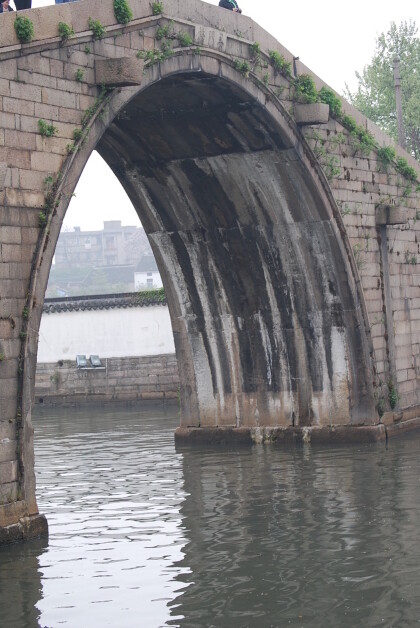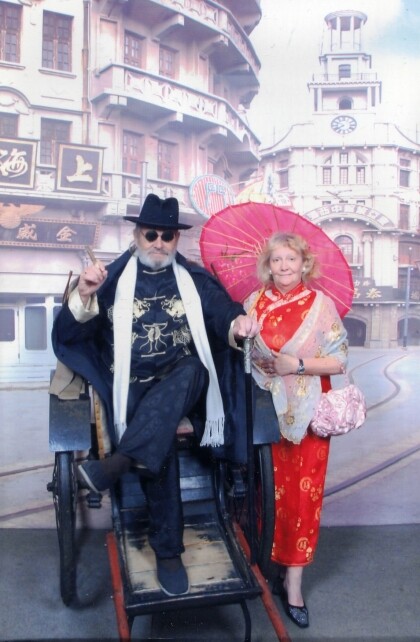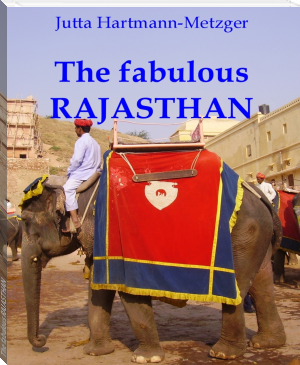CHINA - impressive history and stormy present by Klaus Metzger (top 10 novels of all time txt) 📖

- Author: Klaus Metzger
Book online «CHINA - impressive history and stormy present by Klaus Metzger (top 10 novels of all time txt) 📖». Author Klaus Metzger
On Friday morning, 22 April 2011, we walked from the hotel to the nearby "Garden of the fishing master" . Suzhou is known as the former " Venice of the East " and is crossed by numerous canals. On the way to the garden we came across a canal bridge. The "Garden of the Master of Net " ( as he is also known) is the smallest plant of 5,000 square meters in Suzhou. This gives a very nice impression on the design of Chinese gardens of the past.

Garden of fishing master
Marco Polo visited during his time in Beijing (13th century). And the southern cities of Suzhou and Hangzhou. He was thrilled by the silk mill in Suzhou and the impressive palaces, magnificent temples, idyllic parks and wide avenues in Hangzhou. In his time there was already the Grand Canal, which represents a connection to Beijing. In the 12th Century the Song Emperor of Beijing was moved to Hangzhou. At that time, the silk weaving developed in Suzhou to the center of China. There were over 14 channels, 359 bridges (one of which was named Marco Polo Bridge), 50 temples and 12 pagodas.

Marco Polo Bridge

Rush hour in Hangzhou
After a visit to a silk mill and a less good lunch ( the restaurant next to the silk mill ) we launched against 15 clock 30 with the bus to another 150 kilometers to Hangzhou.Two hours later we arrived at our Best Western Hangzhou Hotel. The trip took longer because we came in the rush hour. Our hotel was right in the noisy city center. Nevertheless, we had difficulties to find a small supermarket here. For a change, we landed in a large market hall in which all goods were just tidied for the workday. The impressions spoiled our appetite .
Between the lower reaches of the Quitang River and the West Lake is Hangzhou, the provincial capital of Zheijiang. In Greater live 8 million inhabitants. As the main attraction of Hangzhou West Lake applies the ( so termed for its location ). The 5.2 sq km of lakes, is like a park laid out and has many temples, pagodas and pavilions. The average water depth is 1.5 m and the lake is bounded on three sides by mountains.

Boat on the West Lake

In the morning exercises
The Harmony Pagoda is located 3 km south of the West Lake, and stands on a hill - with a magnificent view of the River Qiantang Jiang with the 1934-1937 built road railway bridge (1.4 km long). The exact name of the sixfold harmony evokes the sixfold unity and commonality in the Buddha Monastery: in teaching, leadership , worship, liturgy , morality and faith.

Marriage market before the Harmony Pagoda After the boat trip on the West Lake , we drove south to Harmony Pagoda, which is beautifully situated in a park. From the hill you also have an excellent view of the Qiantang River. The Six Harmonies Pagoda is octagonal and 60 m high. It was once used as a lighthouse. The exterior wood siding is 13 stories but of which only 7 floors are committed. When we visited the pagoda on Saturday morning, just a marriage market was held. These usually take place in public places, for which no entry has to be paid (such as when you visit the Pagoda) told us the Chinese DERTOUR travel manager Mike.

Mages on the market On the map of the " Night Market " ( night market ) is clearly marked and is located east of West Lake. In a sense, through the back door to get into a very interesting museum with gold occupied, impressive figures. Attached to the museum is also a sales shop. After the sightseeing in Hangzhou ( boat tour on the West Lake , Harmony Pagoda ) we went to the market in the old town. We found him interesting day. We had an hour to conquer it on your own. Then the bus went to Shanghai (about 200 km).
The fishing village of Zhujiajiao is also commonly called water village. It is located on the eastern shore of Dianshan Lake about 40 km west of Shanghai , is also administratively it. Despite recent modernization and development for the tourist to win impressions of a bygone era.

Boating in the fishing village
On our bus ride from Hangzhou to Shanghai visited the interesting fishing village. Getting there was quite complicated and we were traveling from Hangzhou about 3 hours. But the effort was worth it: We took a small boat through several channels that were spanned by numerous stone bridges. In this way, we arrived in the historic center of the Ming and Qing dynasties. On the way back we walked alone on foot, which is designed to be not very easy, because the streets ( pedestrians only ) were very winding. There were numerous fish restaurants, was lured into the massively. We drove two hours for dinner on to Shanghai.
Entrance to the Hyatt Hotel After an exhausting bus tour of Hangzhou on the interesting fishing village of Zhujiajiao and a good dinner with a small stage show in Shanghai wanted my wife and I actually only to the hotel to relax (it was full 21 clock on Saturday , 23 April 2011). Nevertheless, we DERTOUR our tour guide Mike tried to convince us to a candlelight tour of Shanghai ( costs 50 yuan for the tour and 100 yuan for visiting the observation deck of the Jin Mao Tower in Pudong - 420 m altitude ).
We participated only on the tour, but it was also disappointing because I lacked a suitable tripod for the night shots. We saw of Pudong from the colonial to the "covenant" in a beautiful lighting. But for a tour of the night Nanjing Road we had no sense. Around 23 clock we were at our hotel ( Zhongxiang Hotel Shanghai). The following evening (Sunday , April 24, 2011) one could perform these lights tour much more relaxed.

In the teahouse

In the Yu Garden Our sightseeing, on Sunday, the 24th September 2011, began in Yu Garden, which lies in the middle of the old town of Shanghai. This was very impressive and is one of the most impressive literary gardens in southern China. We visited around 10 clock the garden and there were only a few tourists go.
The old town of Shanghai was already before 1 after Opium War, the foreigners came. From the original old town from the time of pre-revolutionary China, there are only remnants. The original district near the Old North Gate was demolished and replaced by buildings in the style of old Shanghai. Of east lies the impressive Yuyuan Garden. It was created in 1559 as a retirement residence of a high official of the Ming Dynasty. Directly in front of the main entrance there is the Huxington tea-house, which is only accessible via the nine-piece Zigzag Bridge.

In the photo studio in the old town
Jutta and made me wandering alone through the old town of Shanghai lot of fun. We saw older Chinese and take pictures this also. From the dangerousness of this district for foreigners nothing more was to be felt.They lured us in a photo studio. There, the picture was taken: " The mafia boss of Shanghai with his wife - Jutta and I in disguise ". After visiting the beautiful Yu Gardens and the Old Town ( with a flying - visit of Huxington tea-house ) we walked to the beach promenade " BUND ". There are scores of popular buildings from the colonial era. We met again before the PEACE hotels on Nanjing Road, which begins at the waist and heads west towards the entrance. By bus we went on to the Jade Buddha Temple.

On BUND
One of the few temples in Shanghai is the Jade Buddha Temple, which is located near the main railway station in the northwestern part. The temple was created in its present form only in the time from 1918 to 1928. Its history dates back only to 1880. About this time that a Chinese monk from Burma (now Miramar ) with two Jadebuddhas. Faithful donors donated to the temple for these beautiful stone figures. The lavish , gilded figure program in the temple is a further indication of the wealth of the city. A trick these religious images survived the Cultural Revolution ( 1966-1969 ): The monks stuck Mao portraits of the double leaf doors. In violent opening Mao would have been torn.

Jade Buddha figure





Comments (0)